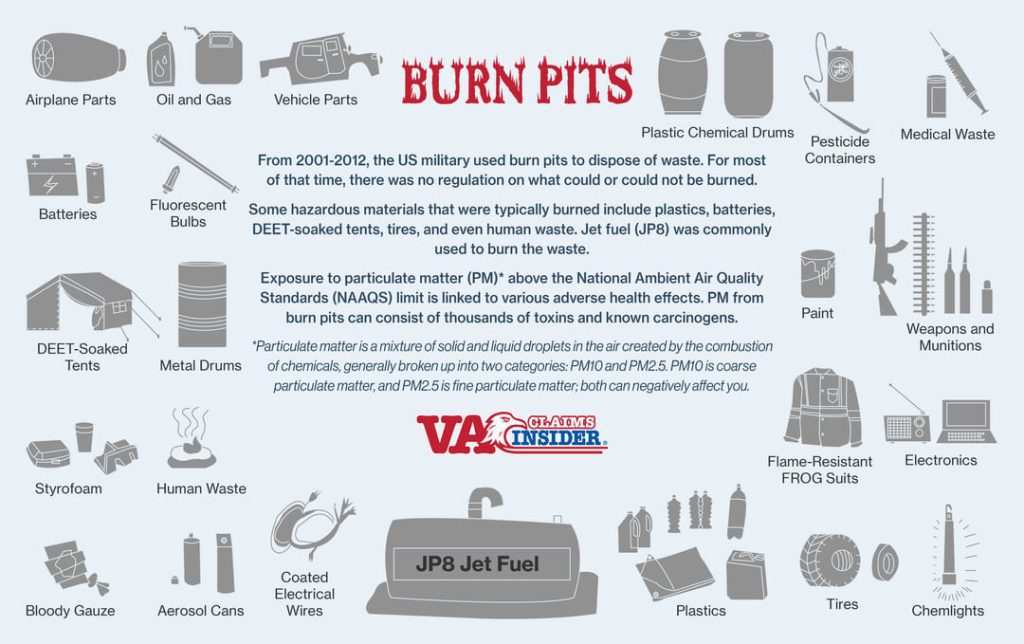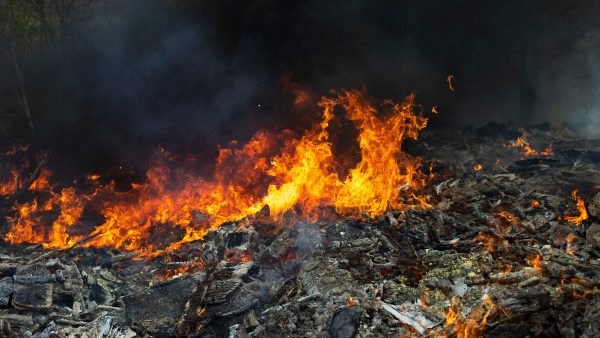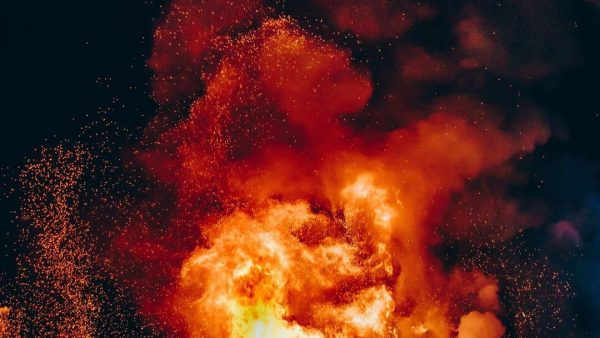Looking for Expert-Level VA Claim Answers?📱Call Us Now! 737-295-2226
Veterans, if you’ve been exposed to burn pit smoke during your service, you might be worried about the potential health effects. We understand how important it is for you to get the support and care you deserve.
That’s where the Airborne Hazards and Open Burn Pit Registry (or burn pit registry for short) comes in—it’s a vital tool to help you navigate the road to better health and disability benefits.
In this guide, we’ll take you through the VA Burnpit Registry and the important impacts on your benefits with the recent burn pit Bill (PACT Act).
Table of Contents
Summary of Key Points
- The VA Burn Pit Registry tracks health data for veterans exposed to airborne hazards like burn pit smoke.
- You’re eligible if you served in Southwest Asia or certain other regions after August 2, 1990, or September 11, 2001.
- The registry includes an online health questionnaire and optional VA evaluation—both voluntary and non-impacting to current claims.
- Registry participation can support future VA claims and contribute to ongoing research on exposure-related conditions.
Government Response to Burn Pit Exposure

Previously, veterans were denied a VA rating specifically for burn pit symptoms related to burn pit exposure. However, in response to pressure from disabled veterans and media reports on the potential toxicity of burn pit exposure, the government began re-evaluating its position.
The Department of Defense has identified open-pit burning as a source of particulate matter pollution. However, federal laws in the US regulating this kind of pollution do not generally apply on foreign soil. The government’s 2011 research on burn pit exposure and its long-term effects failed to consider the growing evidence of burn pit symptoms reported by military personnel.
Creation of the Burn Pit Registry
To track and analyze burn pit exposure symptoms and trends, the Open Burn Pit Registry was created in 2014. This information helps policymakers determine how veterans are impacted by Burn Pit exposure and can lead to new presumptive service-connected conditions added to the VA’s list for burn pit exposure.
While progress has been made in recognizing and compensating victims of burn pit exposure, there is still more work to be done.
However, the VA’s recognition of respiratory conditions as presumptive to burn pit exposure in certain theaters and regions is a significant step forward for veterans seeking service connection for their symptoms.
How to Join the VA Burn Pit Registry
You’re eligible to join the burn pit registry if you served in any of the following:
- Operations Desert Storm/Desert Shield (ODS)
- New Dawn (OND)
- Iraqi Freedom/Enduring Freedom (OIF/OEF)
- The Southwest Asia theater of operations any time after August 2, 1990
- Afghanistan or Djibouti after September 11, 2001
Even if you don’t think you were exposed to specific airborne hazards during your deployment, it’s better to be safe than sorry if you were in the area where burn pits were active.
Here are a few instances where veterans might be hesitant to sign up for the burn pit registry:
- You may not be experiencing symptoms or illnesses related to your exposures
- You haven’t filed a VA claim for compensation and benefits or applied for VA healthcare
- You’re still an active-duty service member or have returned to active service.
In all three of these instances, we encourage you to register. The registry can help you track your health and provide additional medical evidence to support a VA claim.
How to Register for the Burn Pit Registry
You can register for the Airborne Hazards and Open Burn Pit Registry here.
The registry includes two main parts: an online questionnaire and an optional health evaluation.
Part I: Health Questionnaire
The first part of the registry is an online questionnaire. It might take some time to complete, depending on how many times you’ve been deployed. But don’t worry; you can save your progress and return later if needed. The questions will ask about your deployments, health history, and lifestyle.
Part II: Health Evaluation
There’s also an optional health evaluation that you can do. A VA or military health provider will do this. But it’s completely voluntary and won’t affect your compensation or benefits exams. The notes from your evaluation will be used to support research.
Once you’ve completed at least the questionnaire, you’ll be officially registered with the Burn Pit Registry.
Joining this registry is important because it can help you get the benefits you deserve if you’ve been exposed to toxic substances during your service.
How the Burn Pit Registry Helps You Win Your VA Claim
Navigating the VA claims process can be challenging, but the Burn Pit Registry helps. Joining the burn pit registry can help you begin to establish the required evidence to win your VA claim for burn pit exposure.
Your claim won’t just be for burn pit exposure; it will be for the condition you develop as a result of your exposure. Your burn pit exposure will help prove that your condition is connected to your military service.
The Burn Pit Registry helps you meet the three requirements necessary to earn a burn pit VA disability rating:
- Current diagnosis of a health condition related to burn pit exposure: Many conditions are now listed as presumptive due to the PACT Act (discussed below).
- Evidence of an in-service event or illness that led to the development or aggravation of your condition: By participating in the Burn Pit Registry, you can provide documentation of your burn pit exposure during your service.
- A medical nexus linking your condition to your service: The optional health evaluation offered through the Burn Pit Registry can help establish a connection between your current health condition and your burn pit exposure during service.
The good news is that a recent burn pit bill has made it much easier for veterans like you to win your VA claim if you developed a condition as a result of burn pit exposure through what is called presumptive service connection, where the VA assumes certain conditions are related to burn pit exposure, helping you earn a burn pit disability rating.
Presumptive Conditions Related to Burn Pit Exposure
Presumptive service connection plays a critical role in burn pit VA disability claims. It simplifies proving the relationship between your military service and your current health condition. By acknowledging that specific health issues are likely connected to burn pit exposure, the VA makes it easier for veterans to access the compensation they deserve.
The PACT Act has made it easier for veterans exposed to burn pits and particulate matter to get the benefits they need. The PACT Act acknowledges the connection between these exposures and specific health conditions by adding Burn Pit and Particulate Matter Exposure to the VA presumptive list.
With any of the conditions listed below, you no longer need to provide a detailed medical nexus linking your condition to your service. Instead, you simply need to demonstrate that you served in an eligible location during the specified timeframes and have a current diagnosis of a recognized presumptive condition. This streamlines the claims process and increases the likelihood of a successful outcome for your claim.
Military Burn Pits List
If you served in any of the following locations during the specified timeframes, it is “presumed” that you were exposed to airborne particulates:
- Bahrain, Iraq, Kuwait, Oman, Qatar, Saudi Arabia, Somalia, the UAE, or the airspace above these locations on or after August 2, 1990.
- Afghanistan, Djibouti, Egypt, Jordan, Lebanon, Syria, Uzbekistan, Yemen, or the airspace above these locations on or after September 11, 2001.
Here’s a list of all conditions presumptively service-connected to burn pit exposure:
1. Respiratory and Sinus Conditions
- Asthma
- Rhinitis
- Sinusitis
- Chronic bronchitis
- Chronic obstructive pulmonary disease
- Constrictive or obliterative bronchiolitis
- Emphysema
- Granulomatous disease
- Interstitial lung diseases
- Pleuritis
- Pulmonary fibrosis
- Sarcoidosis
2. Cancers
- Glioblastoma
- Head cancer
- Neck cancer
- Respiratory cancer
- Gastrointestinal cancer
- Reproductive cancer
- Lymphoma
- Lymphatic cancer
- Kidney cancer
- Brain cancer
- Melanoma
- Pancreatic Cancer
Register Today
To all veterans who have been exposed to burn pits or other airborne hazards, we encourage you to sign up for the VA Burn Pit Registry and utilize the resources available to you. Don’t hesitate to join, even if you’re unsure about your exposure or not currently experiencing symptoms.
Remember, the registry is here to support you and your fellow service members, and your participation can make a difference in your own life and the lives of other veterans around the country.
RELATED Guides and Information
Military Burn Pit Locations
23 Burn Pit Presumptive Conditions Added
How to ACE Your Burn Pit C&P Exam!
Burn Pit Disability Percentages—Explained!
(FAQs) Frequently Asked Questions
What is a burn pit?
Burn pits are open-air pits used to dispose of waste materials in military bases, particularly in war zones. These pits are often large, sometimes as big as several acres, and they’re used to burn all kinds of waste—from plastics and metals to medical waste and human waste.
Unfortunately, this method of waste disposal produces a hazardous mix of toxic chemicals in the form of smoke and fumes that have potentially severe health consequences for veterans with cancer and respiratory conditions.
Many burn pit-related conditions that impact veterans take time to develop. The burn pit registry serves as a snapshot in time, helping you track your health changes over time and giving you additional evidence when filing a VA claim.
Where were burn pits used?
View List of Military Burn Pit Locations
If you’ve served in Iraq, Afghanistan, or other parts of Southwest Asia, there’s a good chance you’ve encountered burn pits. They were widely used in these regions, especially during Operation Iraqi Freedom and Operation Enduring Freedom. As a result, many veterans have been exposed to the harmful smoke emitted by these burn pits.
What was thrown in burn pits?
Burn pits were used to dispose of a wide range of hazardous materials and waste products, including but not limited to:
- Metal
- Rubber
- Chemicals
- Paint
- Medical waste
- Food waste
- Munitions
- Petroleum products
- Human waste
- Plastics
- Other hazardous materials
When burned together, these hazardous materials produce a toxic mix of airborne pollutants and carcinogens. If you spent time near one of these pits, you were at risk of inhaling these pollutants for long periods, leading to long-term medical conditions.

What are the Symptoms of Burn Pit Exposure?
It’s crucial to recognize the symptoms associated with burn pit exposure. Here are some common signs to watch out for:
Respiratory Symptoms
- Persistent cough
- Wheezing or shortness of breath
- Chest pain or tightness
- Asthma or other breathing disorders
Other Burn Pit Exposure Symptoms
- Chronic fatigue
- Skin rashes or irritation
- Persistent headaches
- Unexplained weight loss
- Sleep disturbances
How Does Burn Pit Exposure Impact Veterans?
The harmful effects of being close to a burn pit while serving can stay with you decades after the exposure. Recognizing the signs and symptoms is essential to ensure you get the proper care and support for any exposure.
The burn pit registry not only helps you become more aware of your own health, but it also provides evidence for the creation of additional presumptive service conditions, making it easier for all veterans to get the benefits they deserve.
Why is Burn Pit Smoke Bad?
The smoke from burn pits contains a toxic cocktail of chemicals that can have severe health consequences. Some of the harmful substances found in burn pit smoke include:
- Dioxins and furans: Produced when plastics and other materials are burned, these chemicals are known to cause cancer and other health issues.
- Volatile organic compounds (VOCs): Gases emitted from burning fuels, solvents, and other materials, VOCs can cause respiratory issues and other health problems.
- Heavy metals: Burning electronic waste and batteries can release heavy metals like lead, cadmium, and mercury, which can harm the nervous system and other organs.
You can be exposed to these harmful chemicals through your skin, nose, and lungs. Over time, they can take a heavy toll on your health.
What Body Systems can be affected by burn pit exposure?
Burn pit smoke contains toxic chemicals that can impact multiple body systems over time. Veterans exposed to airborne hazards during deployment may experience issues in one or more of the following areas:
- Respiratory system – chronic cough, shortness of breath, asthma, COPD
- Cardiovascular system – chest pain, irregular heartbeat, elevated blood pressure
- Central and peripheral nervous systems – headaches, memory problems, nerve pain
- Gastrointestinal system – nausea, diarrhea, abdominal discomfort
- Reproductive system – fertility issues, hormonal imbalance
- Liver and kidneys – impaired function, toxin processing challenges
- Skin – rashes, irritation, unexplained lesions
- Eyes – irritation, blurred vision, dry eyes
If you’re experiencing any of these symptoms and served in a location with known burn pit exposure, enrolling in the VA Burn Pit Registry may help document your exposure and support your claim for related VA benefits.
Want Expert-Level Support for Your VA Disability Claim? WE GOT YOUR SIX!
- 4.7/5.0 average rating out of 5,500+ total reviews; over 4,500 5-star reviews.
- VA Claims Insider is the #1 most trusted name in VA disability claims.
- Work directly with a VA claims coach who can educate you to VA claim victory.
- 25,000+ disabled veterans have served in our membership programs since 2016.
- 30% average rating increase for veterans who complete our #1-rated Elite program.




